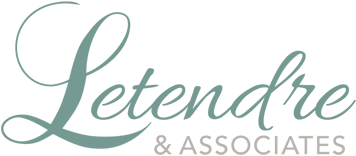How Mature Are We?
Organizational maturity is a concept that is central to organizational excellence. How well do we do what we do? And, are we aware of what the next stages of maturity entail?
Organizational maturity is different from organizational life cycle.
Some of you may be familiar with Baldrige, others have never heard of it, and still others here are fully vested in integrating this into how you lead and manage your organizations and programs. I was struck by what Brian Lassiter shared recently (and I paraphrase): we are all using Baldrige, whether formally or informally, whether we know it or not. If we have customers and leaders, if we deliver our products and services through people and processes, then we are “using Baldrige” – a management system.
Baldrige is a non-prescriptive organizational framework. It is a leadership and management system. It is a way of running an organization. And it is a proven model for organizational improvement, advancement, and ultimately organizational excellence.
And it includes a structured way of assessing organizational maturity, identifying gaps, and spurring improvement. For some, it also is a means for validating progress and receiving external recognition of their performance.
In my 20+ years being in and around organizational excellence and Baldrige this way of thinking, and working, and leading is in my blood. In working with organizations, I, in one way or the other, am always thinking from a systems perspective:
- What is in flow, what is stuck?
- What processes are in place and which are absent? Or simply too informal?
- What is the root cause of the results we are seeing?
- How is this organization operating as a system and where is it suboptimizing?
- What will help the organization reach the next levels of performance?
So, while I only occasionally use the B word (Baldrige), it is in fact the holistic, systems-view that I think in, the lens I look through, when working with an organization and its leaders.
So how does one determine organizational maturity?
Embedded within the Baldrige excellence framework, is a maturity scale – a way of assessing how well are we doing as an organization. It gives us a lens to examine our organizational processes, as well as our results. The full Baldrige criteria booklet (and its companion the Baldrige Excellence Builder) include this maturity evaluation model.
In brief, for each of our organizational management practices (for leadership, strategy, customer-focus, measurement, workforce and operations), we examine ourselves on four dimensions:
- Approach: How do we do this? What are our methods? Are they repeatable and repeated? Is our approach systematic and effective?
- Deployment: Are we using this approach consistently? Are we using it in all the areas and units in the organization where it is pertinent?
- Learning: Are we evaluating our approaches? and their deployment? Are we making refinements and improvements based on this cyclical evaluation? Are we adopting best practices? What about innovations?
- Integration: Are the parts of our organizational management system working in a unified and connected way? Are our plans, measures, processes working in harmony? Are our processes addressing our most important needs?
There are many things that I love about the Baldrige framework!! One of them is this assessment rubric (referred to as ADLI) along with its scoring guidelines. This aspect alone can help organizational leaders to understand the parameters of organizational maturity.
Let me use an example to illustrate:
In the area of being customer-focused, for example, what is our approach to understanding customer satisfaction and dissatisfaction? Do we have a method for doing this consistently or is it simply an ad-hoc activity done when “Sam is working”?
Perhaps, we may have a method for understanding customer satisfaction, but not one for understanding customer dissatisfaction. Or we may jump from one method to another, never sticking with one for long enough to get meaningful longitudinal information.
That is Approach.
Okay, we may have an Approach. We use post-visit customer surveys and follow-up phone calls to assess both customer satisfaction and uncover customer dissatisfaction.
Is it deployed consistently? Do we use it at a regular frequency?
And do we use our approach in all of the work units and with all of the customer segments where this method would be effective?
That (in simplistic terms) is Deployment.
Do we routinely evaluate how well this method is working in order to gather actionable information about customer satisfaction and dissatisfaction? Perhaps the method is effective for understanding satisfaction, but it has not proven valuable for uncovering dissatisfaction. Or perhaps it has proven ineffective in reaching a particular segment of customers.
Based on our periodic evaluation of our approach and its deployment, what refinements have we made to either the approach and or its deployment?
That, in a nutshell, is the Learning dimension.
And the final dimension of maturity is integration. Do we use this method of gathering customer satisfaction and dissatisfaction for the segments of customers who are most vital to our long-term success? And further, do we use the findings in our planning endeavors and improvement efforts (or do we simply look at it in isolation within the customer relations department)?
Those are some of the considerations for Integration.
Approach
Deployment
Learning
Integration

What is our Approach for X (be it, strategy execution, leading as leaders, conducting performance analysis)?
How well is our approach Deployed?
Are we Learning…as in, do we evaluate and improve our methods?
And finally, is our management system Integrated? Do our approaches work together or are they disparate activities?
Within the Baldrige scoring rubric, we can be reactionary (in the 0-25% range), in early systematic stages (30-45%), aligned (in the 50-65% range), or integrated (beyond 70%). Because the Baldrige model can be used to identify and award high-performing organizations, the scoring bands leave lots of room in the upper ranges of maturity to distinguish high-performing from best in class to world class organizations.
Where are you in organizational maturity? What is holding you back from improving performance results?
Sources used: Baldrige Excellence Framework and Baldrige Excellence Builder from the Baldrige Performance Excellence Program

If you’d like to receive these Inspirations in your inbox every other week, you can subscribe to Kathy’s Excellence Advantage Inspirations Newsletter.
Kathy Letendre, President and Founder of Letendre & Associates, advises organizations and leaders to create their excellence advantage.
Contact Kathy by phone or text at 802-779-4315 or via email.

